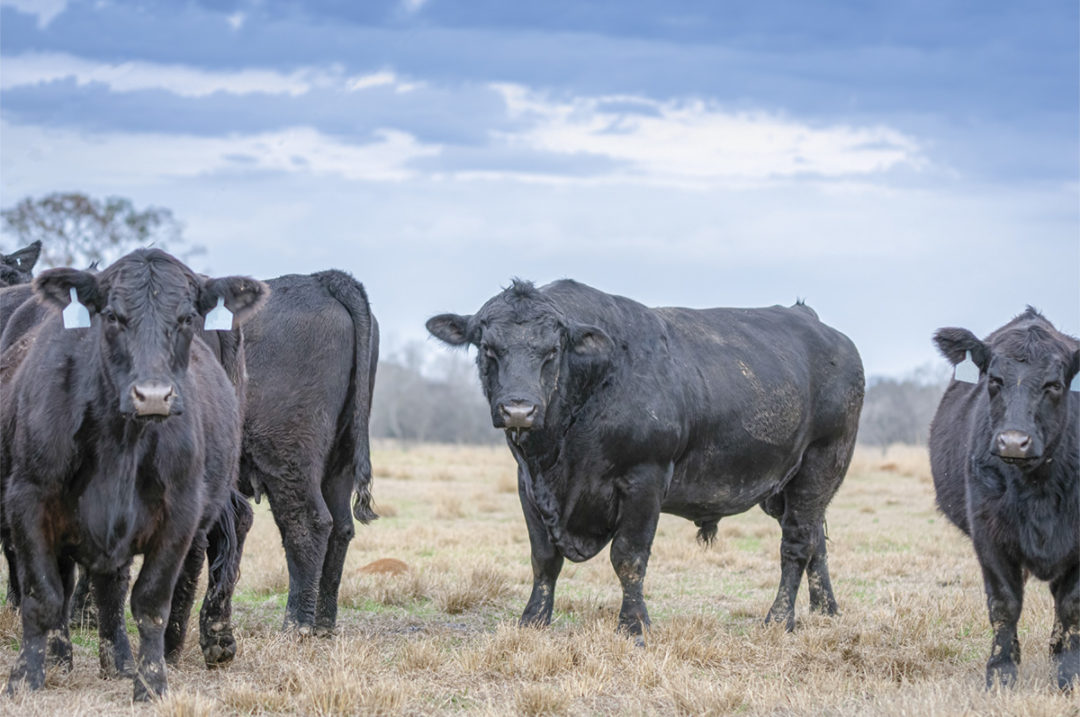As managers of cow-calf production systems, we have available to us many different tools that may be used to accomplish tasks within our operations. Every tool, no matter what type, is designed for a specific purpose. Estrus synchronization is one tool that, when used properly, can be very effective at enhancing aspects of reproduction, which is fundamental to profitability of the cow-calf enterprise and arguably the most important trait.
Since their development and introduction to the beef cattle industry decades ago, the benefits of synchronizing estrus and therefore ovulation in a group of breeding females have been well documented. Our goal with synchronization is to increase the proportion of females that conceive early and therefore calve early within the calving season. Greater calf weaning weights due to increased age at weaning and improved conception rates early in the breeding season in subsequent years by allowing females more time to resume cyclicity prior to the start of the next breeding season are key advantages of synchronization. While frequently discussed within the context of an A.I. protocol, it should not be overlooked that synchronization can also be successfully implemented with natural service. In the U.S., although proportionally more beef heifers are bred by A.I., data continually suggest that well over 90% of the total beef cow inventory is only exposed to bulls each year.
There can be numerous unique situations in which turning in bulls with a group of synchronized females may be an ideal approach for producers compared to using A.I. Regarding economics, natural service breeding allows for some savings on labor and products used for synchronization and semen. However, accurate bull costs including depreciation, feed, health, interest and death loss need to be accounted for to make fair direct comparisons. A helpful budget to compare A.I. and natural service breeding costs is available from the Kansas State University Extension. Ultimately, the direction taken is often a function of three primary factors:
- Labor: We all know too well how challenging the human capital issue is in production agriculture, and it is often cited as a primary reason why A.I. is not utilized. Current protocols using synchronization with natural service require two or fewer cattle handling events compared to protocols using heat detection and/or fixed-time A.I. With the exception of the 14-day melengestrol acetate (MGA) protocol for use in heifers only, natural service protocols still require access to facilities and labor for chuteside work. However, one or more additional handlings with more complex protocols does represent a labor commitment. Certainly, semen companies and, increasingly, veterinary practitioners offer synchronization and/or A.I. services, but there are times when females may be synchronized yet scheduling conflicts or last-minute changes in labor availability may prevent A.I. from being used on a herd.
- Time: Time may be discussed as part of the labor constraint, but it is really a separate issue. Managers must make decisions about where to devote time based on the priorities of the operation. Many cow-calf enterprises are multifaceted, with producers often having other sources of income, which reduces the time they have to devote to checking heats and breeding females. Yes, fixed-time A.I. protocols are intended to reduce the time spent for heat detection, but time is still necessary for coordinating and gathering and handling females for insemination.
- Technician skill level: Sire company representatives and other individuals with prior experience can be a great asset to novice producers. Semen handling, hormone administration and A.I. technician aptitude can all influence the success of an A.I. program. Producers more limited in their experience with A.I. can still achieve the benefits of synchronization with natural breeding by bulls. If synchronization has not been done in previous years, using bulls the first year or two gives producers (1) an opportunity to become more proficient at administering protocols before attempting A.I., and (2) an assessment of how well females are actively cycling prior to breeding and whether they are good candidates for A.I. before making that investment.
A review of various influences impacting success with bulls breeding synchronized females highlights several key outcomes worth noting. When comparing behavior and reproductive performance as influenced by bull age, data indicate that not only do younger bulls mount a greater number of females but that conception rates of serviced females is decreased relative to older bulls. Breeding behavior is inherently learned; thus, the recommendation would be to use non-virgin bulls on synchronized females. While it is always good practice to have a breeding soundness exam conducted well prior to the start of the breeding season to identify potential non-breeders, it does not evaluate the aggressiveness with which bulls will cover and mate females. Ideal sires to use on synchronized females are those that have high libido in addition to meeting minimum requirements to pass a breeding soundness exam, and data indicate that additional bull power beyond typical bull-to-female ratios (1-to-15 to 1-to-25) is not necessarily needed.
A helpful practice would be to assign a relatively smaller pasture for the period of peak estrous response. With more concentrated activity at the start of the breeding season, it is essential that bulls are closely monitored to ensure they are actively servicing females. If using multiple sires in a herd, their hierarchy must be established well prior to the start of breeding to avoid injury. If doable, consider resting bulls for brief periods after the time of heightened cycling activity has passed.
Currently, there are four synchronization protocols recommended by the Beef Reproduction Task Force for use with natural service. These include, for both cows and heifers, the single-shot prostaglandin protocol and both a seven- and 14-day controlled internal drug release (CIDR) protocol. A fourth, approved for heifers only, is the 14-day MGA protocol in which bulls are introduced 14 days after the cessation of MGA feeding. Links to additional protocol details and resources, including spreadsheets to assist with comparing the economics of such protocols, can be found online.
Remember, nutrition as evidenced by body condition score (BCS) impacts the percentage of females cycling prior to breeding. Females in a BCS at or below 4, and those that calve within 30 days of the initiation of breeding, have a higher risk of not responding to the protocol administered. Here is a helpful checklist for making sure the herd is adequately prepared for the start of the breeding season. Be sure to follow Beef Quality Assurance guidelines when administering synchronization protocols, and consult your veterinarian on your health plan as part of overall best management practices to ensure breeding season success.
References omitted but are available upon request by sending an email to the editor.








